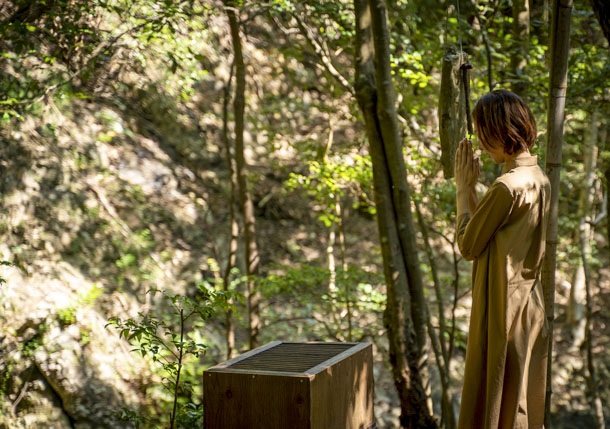- HOME
- Deities
Faith in Mountain & Sea Deities
山と海の神への信仰

The spiritual tradition of Shirataki-san is sustained by a gentle, unforced kind of faith—quietly upheld by local people and visitors alike.
This may be partly because the Ise-Shima region, where Shirataki-san is located, enjoys a warm, mild climate throughout the year. Unlike mountain worship in harsher regions of Japan—where reverence often stems from fear of the severe natural environment—faith here has taken on a softer, more nurturing form.
Blessed with both abundant gifts from the sea and rich harvests from the mountains, this region has long centered its prayers on wishes for a bountiful harvest.
The beliefs associated with Shirataki-san seem to trace back to a fusion of nature worship and reverence for Oyamatsumi-no-Kami—a deity born of the gods Izanami and Izanagi in Japanese mythology.
In this name:
-
“Tsu” (津) functions like the possessive particle “of”,
-
“Mi” (見) refers to a deity or divine presence.
In other words, Oyamatsumi represents “the great god of the mountains.”
This deity is also known by another name: Watashi-no-Ōkami (和多志大神).
Here, “Wata” means “sea,” so the name reflects a combined reverence for both the mountains and the sea—an especially natural expression of faith in the Ise-Shima region, where both elements are essential to life.
Incidentally, the name Mie (三重)—the name of this prefecture—is believed to derive from the word “E (重)”, meaning “to sit” or “to be enshrined.” It implies “a place where the gods dwell.”
The mountain worship seen in this area does not center on the harsh ascetic practices of wandering monks (shugenja), but rather on gentle forms of devotion—such as praying for happiness, purifying the mind and body, or offering service to the divine.
Throughout Shirataki-san, you’ll find natural rock formations like Kobo-iwa and Gyoja-oiwa, which are shaped or positioned in ways that make them suitable for sitting. These spots have long been used for quiet prayer and meditation.
